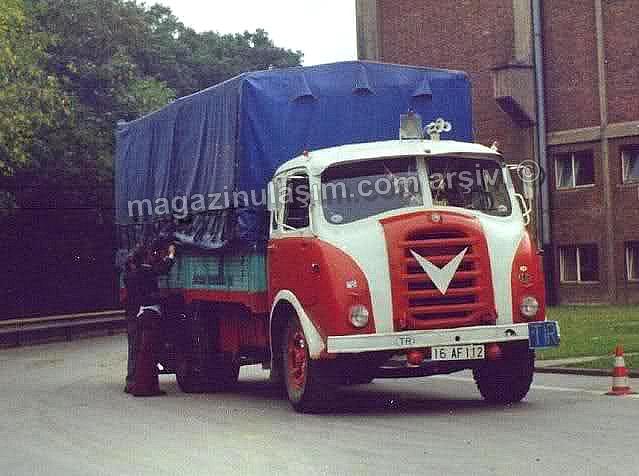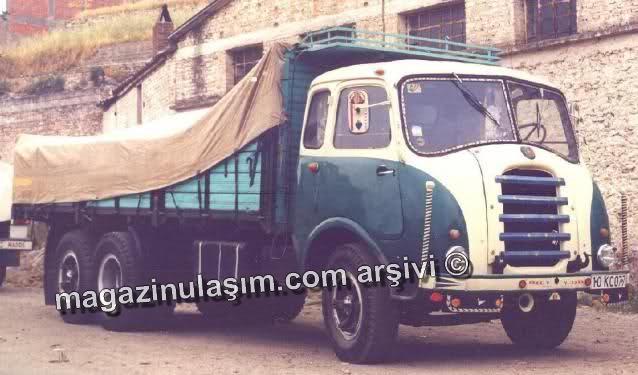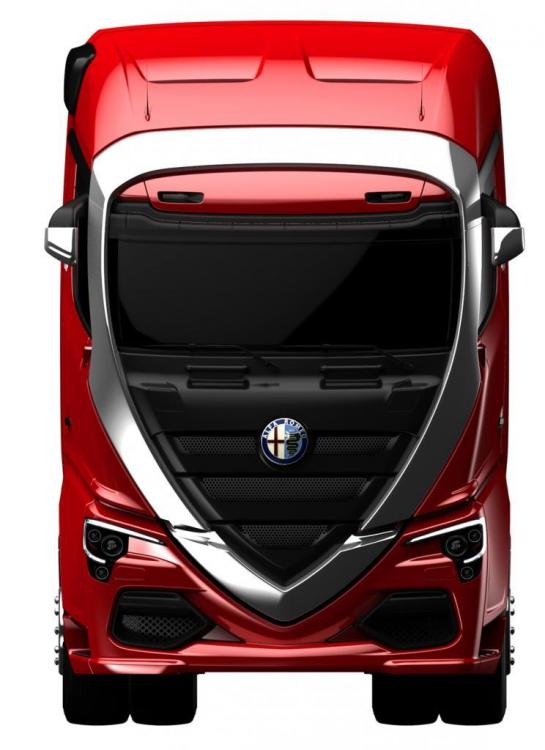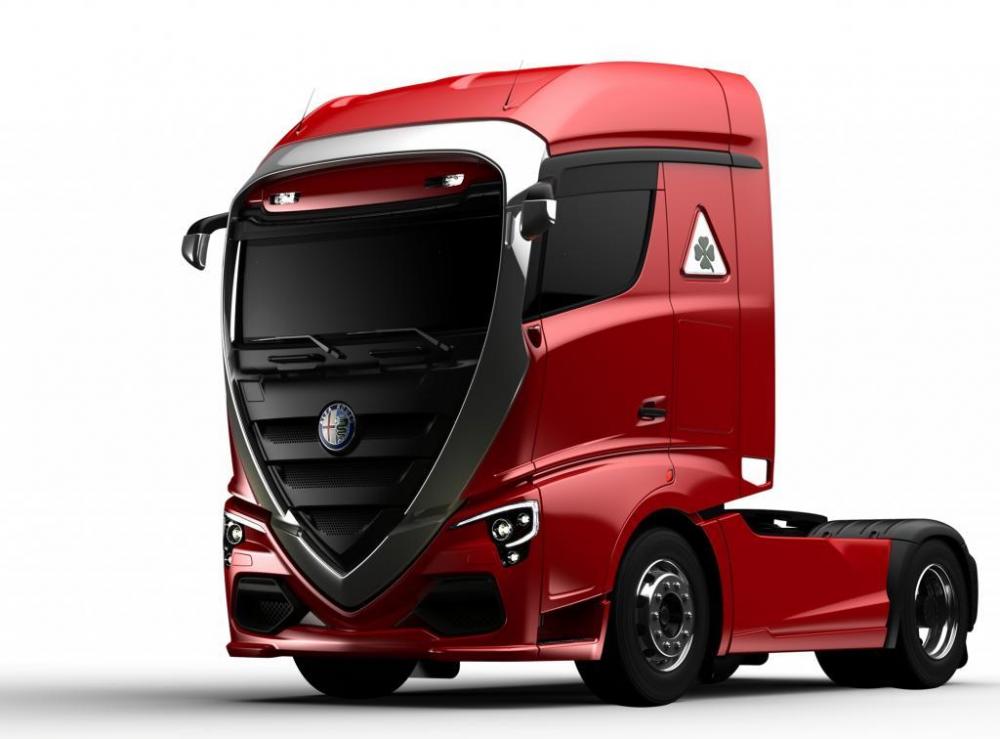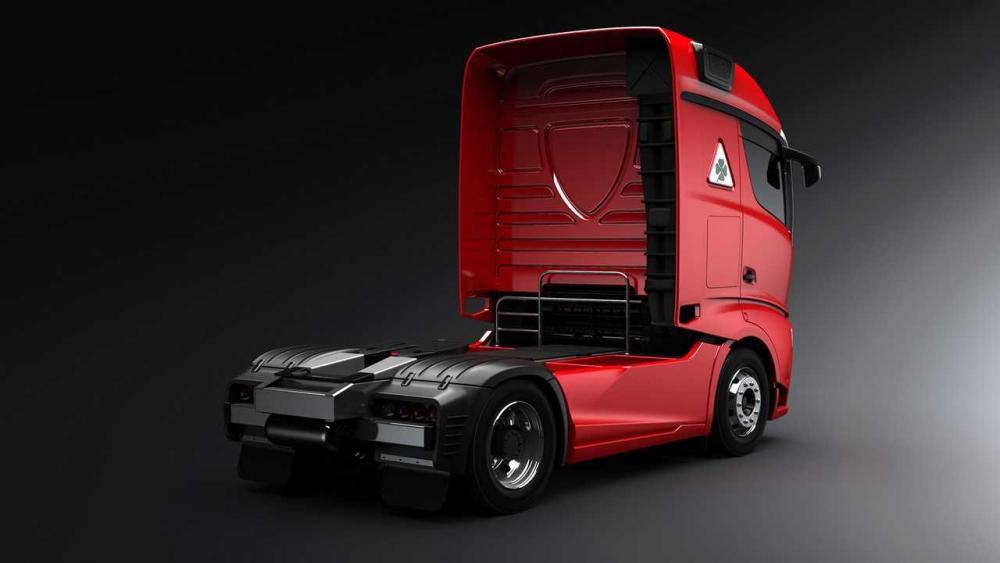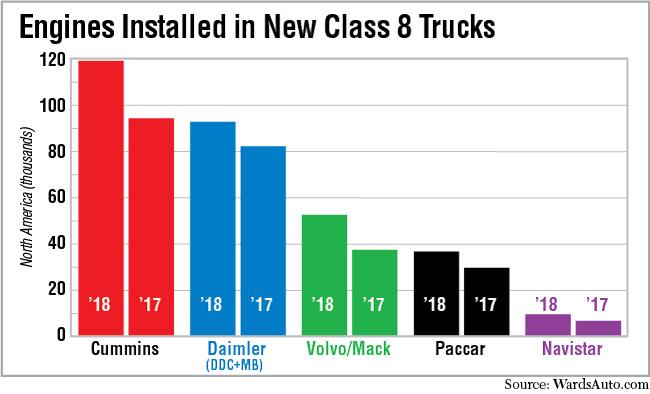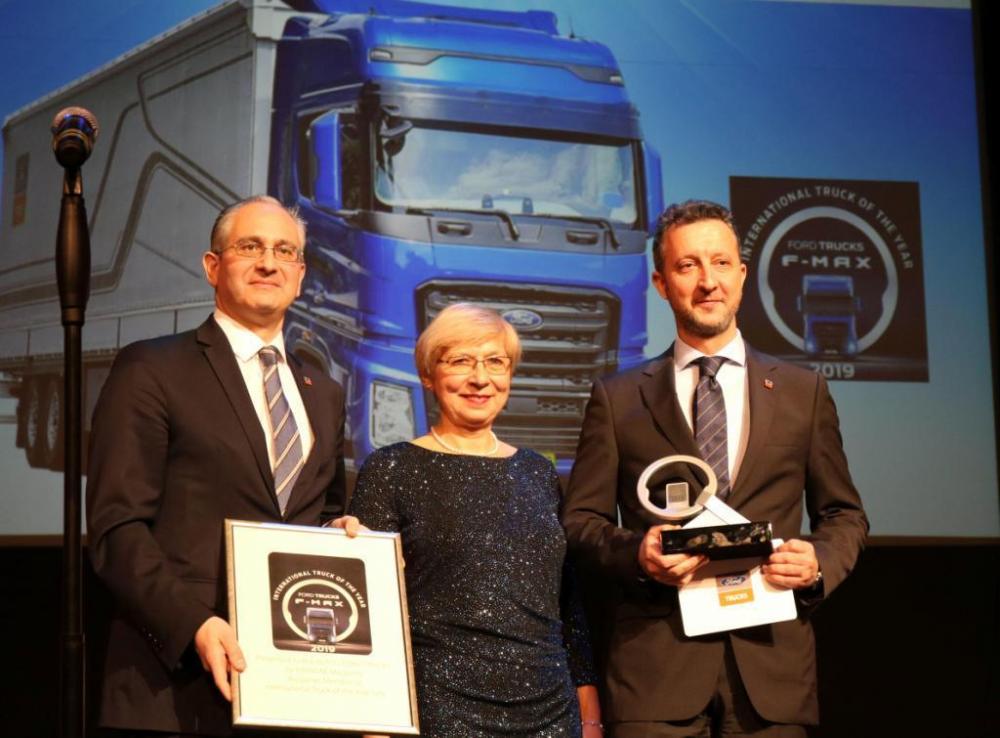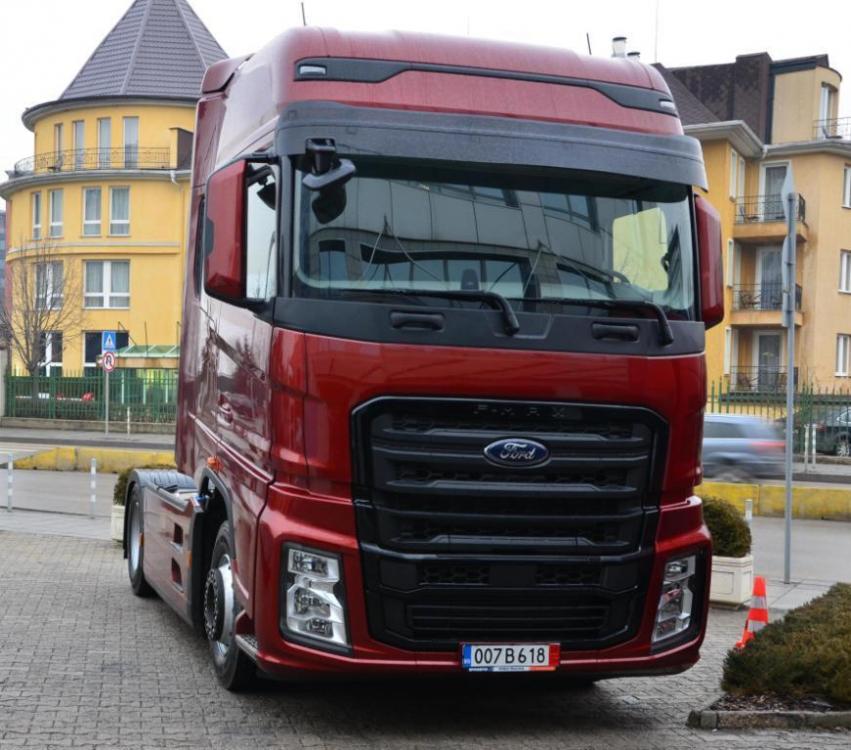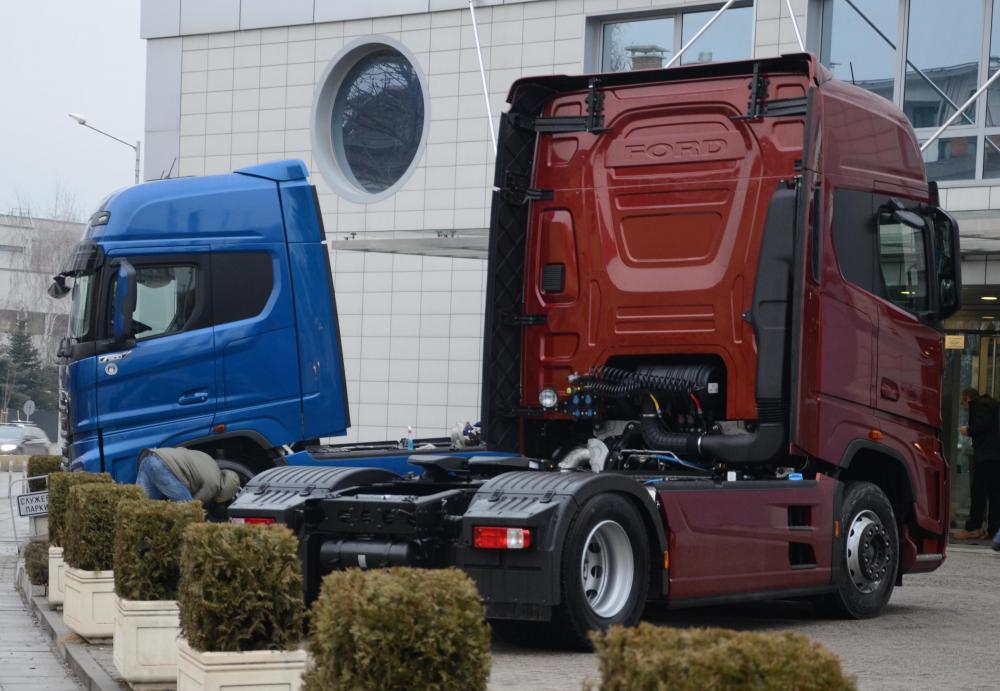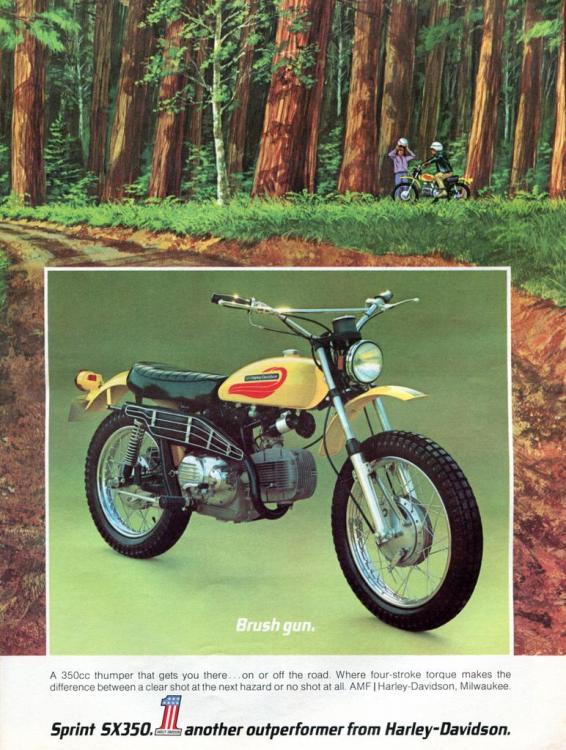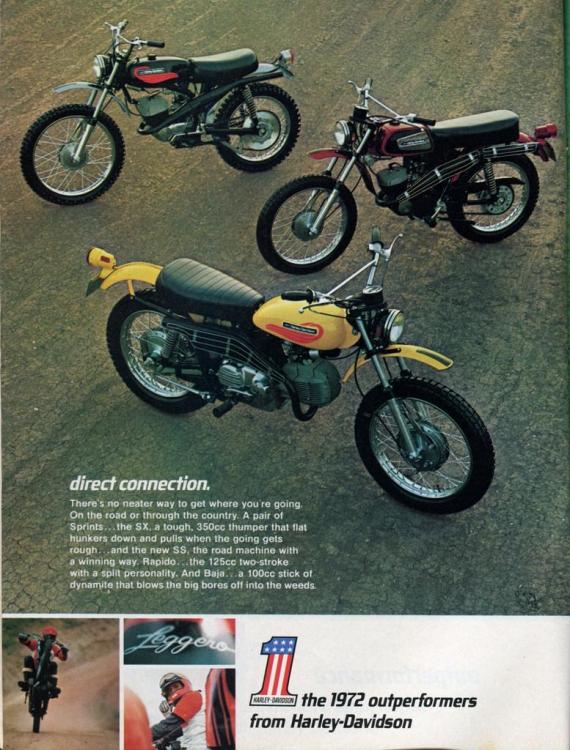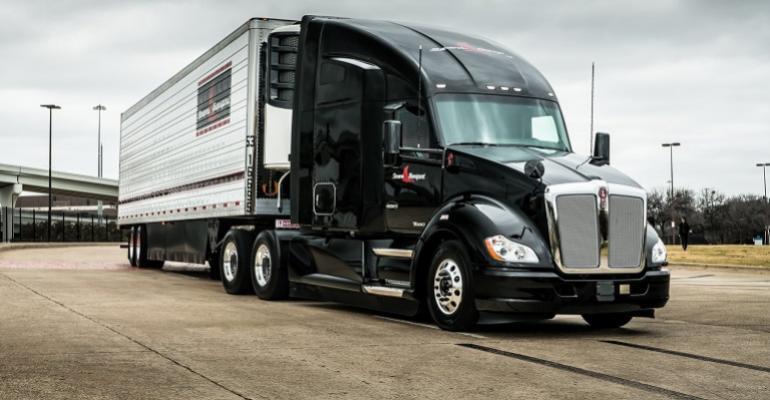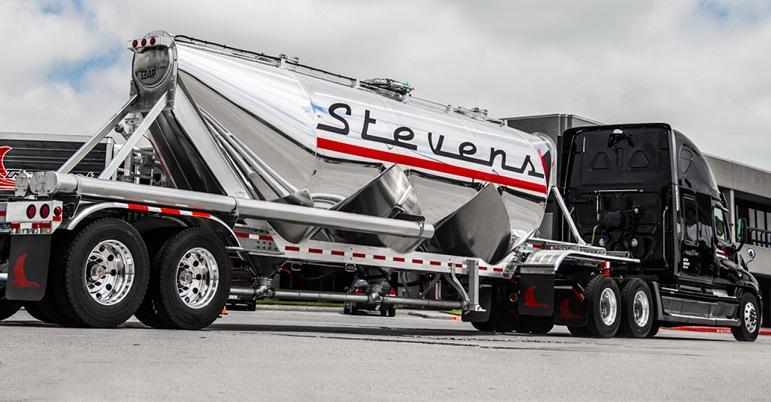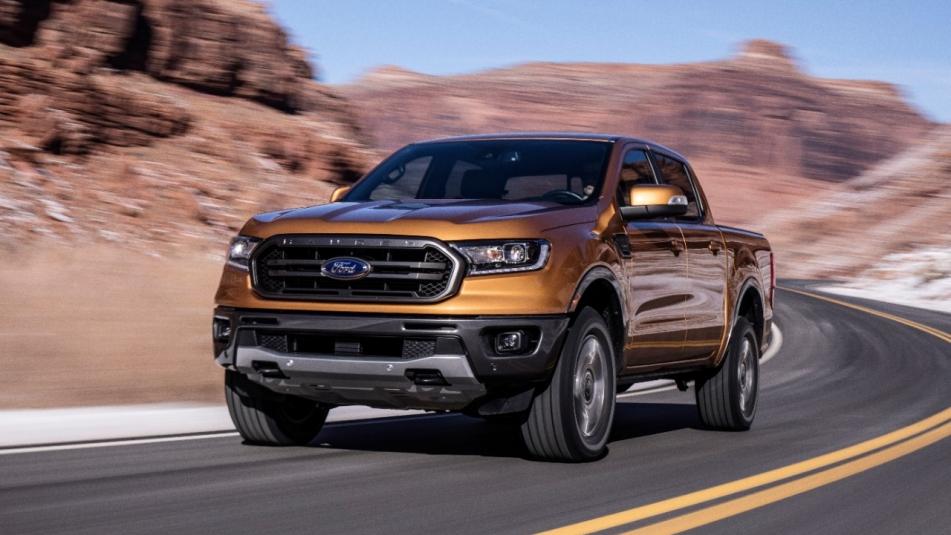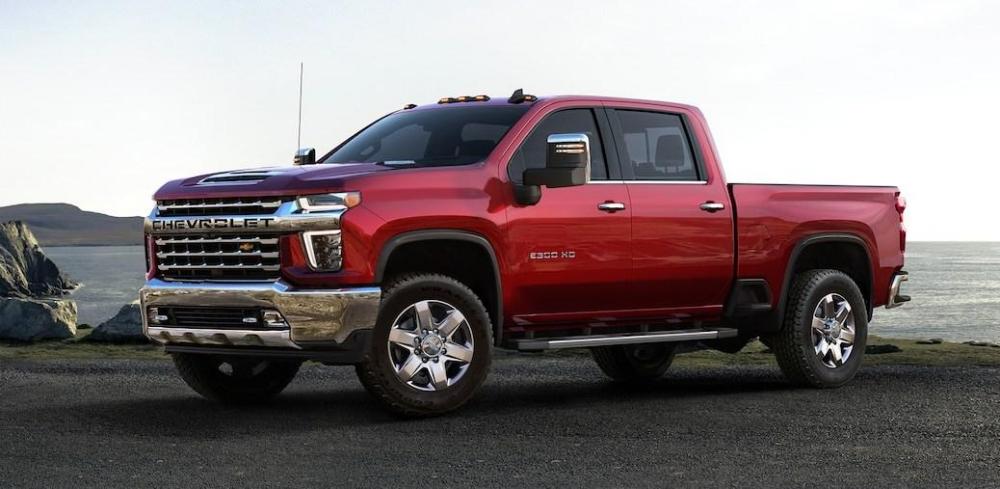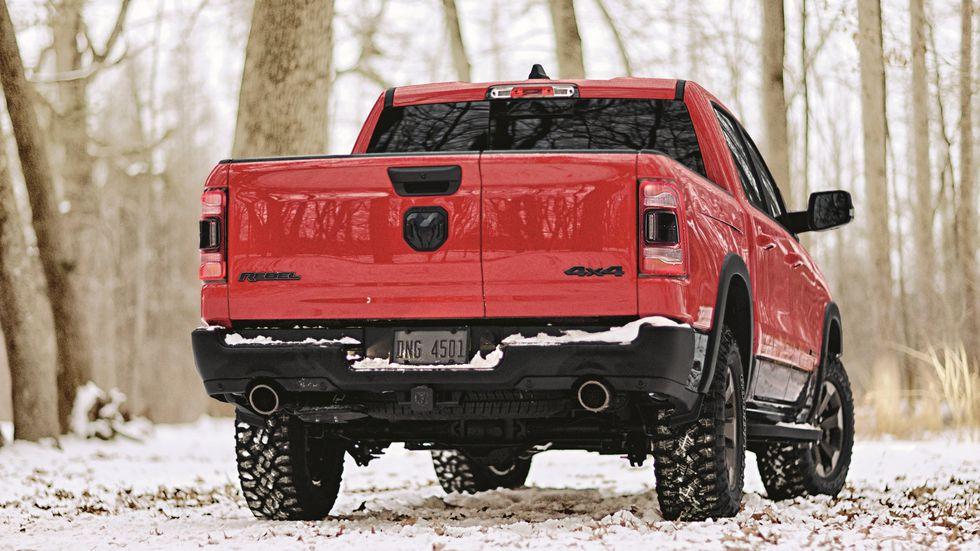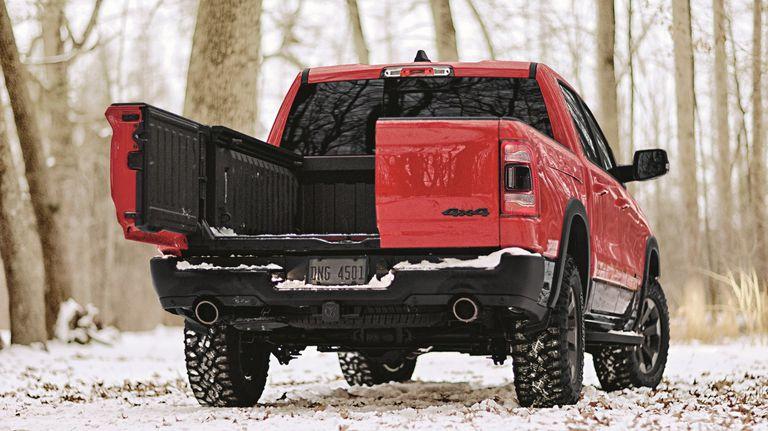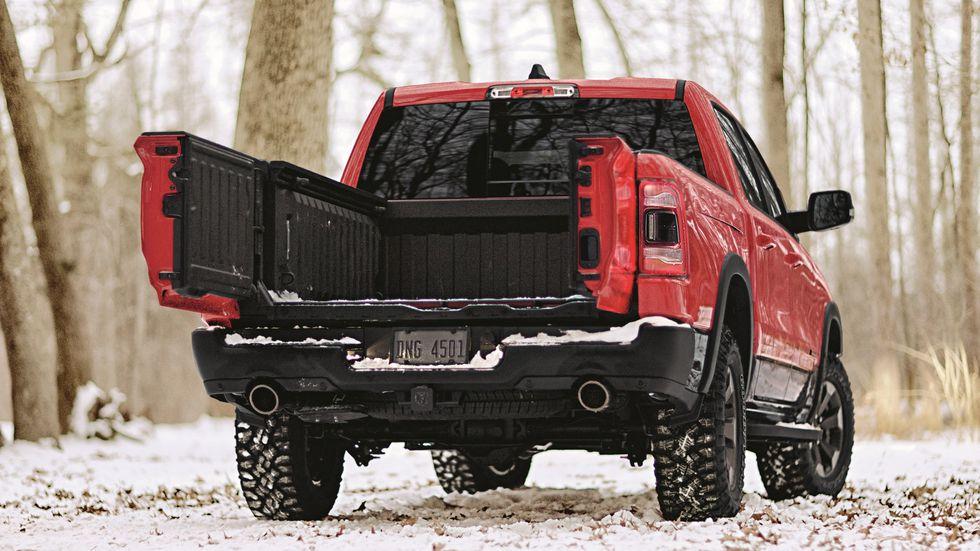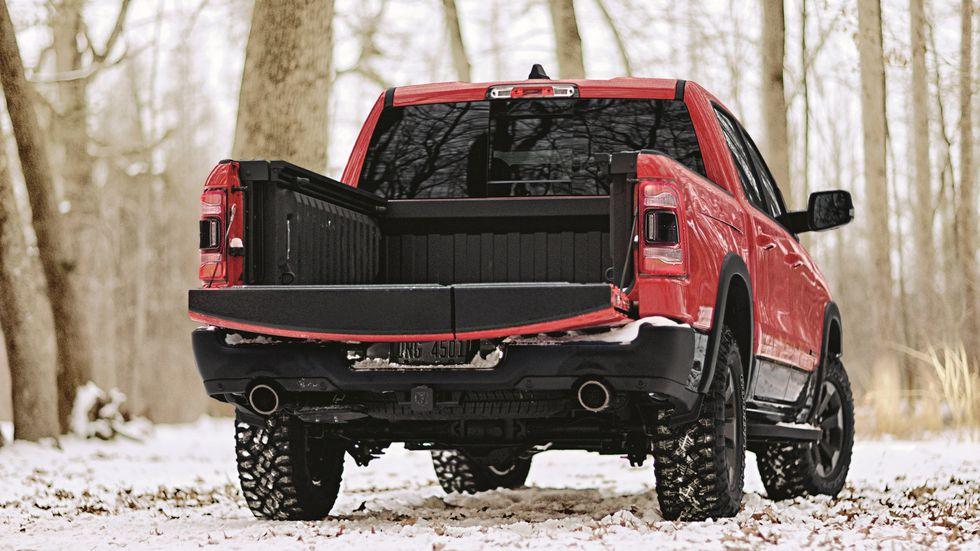
kscarbel2
Moderator-
Posts
17,891 -
Joined
-
Days Won
86
Content Type
Profiles
Forums
Gallery
Events
Blogs
BMT Wiki
Collections
Store
Everything posted by kscarbel2
-
Commercial Motor / February 1, 2019 Manners Transport talk about their new Scania V8 truck. .
-
What would an Alfa Romeo Truck look like for 2020?
kscarbel2 replied to kscarbel2's topic in Trucking News
Related reading - https://www.bigmacktrucks.com/topic/36419-those-brazilian-fnm-alfa-romeo-coes/?tab=comments#comment-253513 -
-
After months of speculation surrounding Sears’ fate, a federal judge has given the iconic U.S. retailer a fresh start. Judge Robert Drain approved the company’s sale to the hedge fund of its chairman — Eddie Lampert — for $5.2 billion. Sears filed for bankruptcy protection in October and appeared to be on the brink of liquidation before Lampert’s ESL Investments made an offer. The sale will result in 425 Sears stores staying open, as well as 45,000 people keeping their jobs.
-
Cummins Top Overall Supplier of Class 8 Diesel Engines in 2018
kscarbel2 replied to kscarbel2's topic in Trucking News
I'm assuming these Class 8 M-B engines were in Class 8 M-B trucks sold in Mexico, even though Daimler said they didn't report Mexican sales. https://www.bigmacktrucks.com/topic/33495-daimler-brings-actros-coe-to-north-america/?tab=comments#comment-216623 -
Roger Gilroy, Transport Topics / February 7, 2019 Independent engine maker Cummins Inc. supplied the most Class 8 diesel engines overall in 2018, and set a record for its heavier-displacement units used in one of the strongest years on record for new truck demand, WardsAuto.com reported. There were 309,701 diesel engines used in Class 8 trucks in 2018. Cummins supplied 118,857, or 38.3%, and had every truck maker as a customer, according to Wards. A year earlier, Cummins earned a 37.7% share with 94,053 of the 249,284 total. “It’s long been said that Cummins competes against all of its customers. We know they can make diesel engines,” Brett Merritt, vice president of on-highway engine business, told Transport Topics. “Our job is to scale them better, to provide a broad product breadth that they may not have, to give the end customer a choice and to help our OEM customers continue to sell trucks. Our goal at the end of the day is sell trucks,” he said. The figures come from a Wards report on North American factory sales of heavy-duty trucks, including their engines, released Feb. 1. The report breaks Class 8 engines into two segments, with 10 liters as the dividing line. Cummins reclaimed the top spot in the heavier segment for the 12-month period. In that segment, it had a 33.9% share of the total 283,210 used, or 96,105 — its all-time record for the segment in terms of volume, Merritt said. More of its X15 engines were used, Merritt said. “It has been showing fantastic fuel economy and has been known for a long time for durability.” He added, “The ISX12 had a pretty strong year for its history.” Cummins unseated Detroit Diesel Corp., which slipped to a 32% share in 2018 with 90,827 engines. It posted a 35% share in the heavier segment in 2017. Daimler Trucks North America has two Class 8 engine brands, Detroit Diesel and Mercedes-Benz. MB had 11 engines used in the heavier segment, down from 818 a year earlier. For the full year, DDC had 92,272 engines used, good for the second-highest share at 29.7%. MB had 271 used. The scope of the report that Wards publishes is North America, including sales to Mexico, a spokesperson for Daimler pointed out. “Our numbers that we submit to Wards exclude Mexico volumes, hence they are incomplete for North America. This has been in effect since November 2017.” Meanwhile, Kenworth Truck Co. and International were Cummins’ two largest customers in the heavier segment — accounting for 35,590 and 30,880, respectively. Kenworth is a brand of Paccar Inc., and International is a brand of Navistar Inc. Paccar CEO Ron Armstrong said in a recent earnings call the company was increasing investments in machining in 2019 “to support the success of the Paccar MX engine and just to continue to increase the efficiency of all of our factories around the world.” Paccar had 34,729 engines used in the heavier segment and 1,742 in the lighter one for a total of 36,471. Ultimately, having more engines used leads to more parts for service and repair, “which typically have a little bit higher-than-average margin,” Armstrong said. At the same time, International and Volvo Trucks North America posted the largest percentage increases in the heavier segment in 2018. International had 9,172 heavier engines used — up 77.5% compared with 5,167 a year earlier — and 9,464 overall. Its A26 engine, available first in on-highway applications, now is available for vocational trucks, said Steve Gilligan, Navistar’s vice president of product marketing. “We’ve actually doubled the number of engines sold in the on-highway market and are just starting to see growth in the vocational,” Gilligan said. VTNA, a unit of Volvo Group, had 29,468 in all, rising 59% from 18,481 in the 2017 period. Volvo is seeing “strong demand and improved vehicle deliveries [up 35%]” in North America, Jan Ytterberg, Volvo Group’s chief financial officer, said in a recent earnings call. Mack Trucks, also a brand of Volvo Group, saw engines used increase 22% to 22,898 compared with 18,766 a year earlier. At the same time, the number of installed Class 8 engines under 10 liters dipped to 26,491 from 28,479 in 2017. Cummins continued to dominate there with 22,752, or an 85.8% market share. “I think it will still be a fairly large part of the industry; 26,000 engines is still pretty large and a good focus for us,” Merritt said. Freightliner, also a DTNA brand, was its largest customer, with 14,345 engines. Detroit Diesel saw the number of its engines used in this lighter category soar to 1,445 compared with 49 a year earlier. MB engines plummeted to 260 compared with 3,714 a year earlier as it faced emissions-related issues. .
-
Harley-Davidson Should Build Pickup Trucks, Not Electric Motorcycles Daren Fonda, Barrons / February 7, 2019 Harley-Davidson’s troubles run so deep that it should start making pickup trucks or SUVs. Either that or Harley could make a good addition to an auto maker like Ford. Morgan Stanley analyst Adam Jonas floated the idea of Harley getting into SUV and pickup truck business in a note out Wednesday. The heavy-duty motorcycle segment is in secular decline, he notes, and Harley—the strongest brand in the space—is taking the brunt of the hit with sales that have been falling for years. Harley plans to launch an electric bike later this year, aiming to capture more eco-friendly and younger customers. Barron’s has been skeptical of that initiative. And Jonas doesn’t view it positively, either. “Are we the only ones who really struggle with the concept of all-electric...silent Harley-Davidson motorcycles?” he asks. Yet Harley has tremendous brand equity that extends to everything from leather jackets to women’s jewelry. Harley could start manufacturing its own SUVs and pickup trucks—admittedly a huge capital-intensive undertaking. Alternatively, it could put itself up for sale to an auto maker like Ford. The auto maker already sells “Harley-Davidson” trim packages on its F-150 and super-duty pickups, Jonas notes. And Harley would make a powerful addition for Ford, which is reviving its retro Bronco brand. Sales of full-size pickups are one of the few bright spots for U.S. auto makers—accounting for as much as half of the industry’s U.S. profits, Jonas estimates. Ford, Chevrolet, GMC, and RAM dominate the market with a 93% share. Harley would make for a powerful fifth brand, he notes, and it would likely be more successful than foreign brands, which lack the “brand authenticity” so crucial to the segment. Jonas doesn’t specifically argue that Ford should buy Harley, and he notes that Harley management hasn’t commented on any of this. He adds, “we have no such knowledge of any potential expansion into such markets.” Harley declined to comment. Ford hadn’t responded with a comment at press time. Harley has other options, of course. The firm could plow headlong into electric vehicles, building smaller, lighter, quieter, and more eco-friendly bikes, Jonas writes. Alternatively, it could innovate on the margins while staying “true to its core,” returning all excess cash to investors. Harley does have some leeway to be more generous with shareholders. The firm reported $992 million in free cash flow in 2018 and spent $634 million on share buybacks and dividends. Its dividend payout ratio is at 46%, leaving room for dividend increases. As for Ford, it could probably use Harley’s brand, but at what cost? Harley has an enterprise value of $12.6 billion, compared with $160 billion for Ford. Presumably, Ford could issue equity to buy Harley. But the price would be higher than today’s value. And a leveraged buyout probably wouldn’t sit well with investors. Ford has $120 billion in net debt and a negative ratings outlook from S&P and Moody’s. Both ratings firms downgraded Ford’s debt last summer to one notch above junk. Merger fantasies aside, Jonas rates Harley a buy with a $50 price target. He bases that valuation on a hypothetical buyout of the firm, based on a multiple of nine times enterprise value/Ebitda (earnings before interest, taxes, depreciation, and amortization). That would peg Harley’s common-stock takeout value at $19.5 billion. Sure, a Harley-branded pickup truck sounds great. But if Ford wants Harley badly enough, it would have to live high on the hog, something it may not be able to afford.
-
Fiat Chrysler paid $77 million in U.S. fuel economy penalties in 2018 David Shepardson, Reuters / February 7, 2019 Fiat Chrysler Automobiles NV told Reuters on Thursday it paid $77 million in U.S. civil penalties late last year for failing to meet 2016 model year fuel economy requirements, the first significant sign the industry is facing hurdles meeting rising emissions rules. The Italian-American automaker has been lobbying the Trump administration to revise fuel economy requirements and last year regulators proposed freezing requirements at 2020 model-year levels through 2026. Shane Karr, head of external affairs for Fiat Chrysler in North America, said in a statement the fuel economy program should be reformed rather than “requiring companies to make large compliance payments because assumptions made in 2011 turned out to be wrong.” Karr added that the automaker is “committed to improving the fuel efficiency of our fleet and expanding our U.S. manufacturing footprint.” The National Highway Traffic Safety Administration (NHTSA) said in a report dated Dec. 21 that the industry faced $77 million in fines in 2016 and that one unnamed manufacturer “is expected to pay significant civil penalties.” The agency did not immediately comment on Thursday. The civil penalty payment is much higher than in prior model years. The industry paid $2.3 million in civil penalties in 2014 and $40 million in 2011. Under federal rules, automakers can accrue credits for overcomplying in some years. In 2012, the Obama administration finalized rules requiring automakers to nearly double the fleet-wide fuel efficiency of vehicles to more than 50 miles per gallon by 2025, but the Trump administration has proposed rolling back those requirements starting in the 2021 model year. NHTSA also noted that the number of automakers’ fleets with credit shortfalls had risen to 26 in 2016, up from 18 in 2011, and the number of surpluses fell from 26 in 2011 to 15. Steve Bartoli, a Fiat Chrysler vice president who oversees fuel economy issues, said in September at a public hearing on the fuel rules that starting in 2016 the auto industry had been unable to meet current requirements without using credits earned from prior model years. Bartoli called the gap “a wake-up call that assumptions made seven years ago about the U.S. auto market need to be revisited.” The NHTSA report also said automakers collectively face projected shortfalls of about $1.2 billion for both the 2017 and 2018 model years, but it was unclear how much in credits can be used to offset the deficits. Fiat Chrysler said the payment was anticipated and the costs were included in the company’s fourth-quarter financial results released on Thursday. The company has previously purchased emissions credits from Tesla, Toyota and Honda. Fiat Chrysler paid penalties for its domestically produced car fleet that did not meet efficiency requirements. It noted rules governing domestically produced cars restrict the use of credits. The company explained the shortfall in part by noting that starting in the 2011 model year some front-wheel-drive utility vehicles previously classified as trucks were moved to the car fleet, which have much tougher fuel-efficiency requirements. Fiat Chrysler noted those vehicles are taller and require more energy than sedans. In 2016, the company produced four such vehicles: the two-row Dodge Journey, Jeep Cherokee, Jeep Compass and Jeep Patriot. By contrast, Fiat Chrysler said its average light-truck fuel economy in 2016 was higher than Toyota, Ford and General Motors, while its car numbers were significantly lower. The Trump administration said last year the fuel economy freeze would save the automakers more than $300 billion in regulatory costs. Trump’s proposed freeze would result in 500,000 barrels per day more oil consumption by the year 2030. California says the proposal “would worsen air quality for the most vulnerable (and) waste billions of gallons of gasoline.”
-
FCA says Q4 net surged 61% on N.A. growth, margins Vince Bond Jr., Automotive News / February 7, 2019 UAW profit-sharing checks rise $500 to average $6,000 payouts Fiat Chrysler Automobiles, boosted by robust gains in North America, on Thursday posted a 61 percent surge in fourth-quarter net income to $1.47 billion along with revenue growth of 6 percent to $34.7 billion. For the full year, FCA's net income rose 3 percent to $4.1 billion. Revenue for the year ramped up 4 percent to $131 billion. FCA said its 44,000 UAW-represented workers in the U.S. will receive average profit-sharing payments of $6,000 -- a $500 increase from the year before -- on March 8. The 2018 profit-sharing payment is based on the company's adjusted earnings performance in North America. FCA said its UAW hourly employees have received more than $29,000 in profit sharing, on average, since 2009. The company said it invested more than $10 billion and created nearly 30,000 jobs in the U.S. in the last decade. Quarterly results FCA's quarterly gain was driven by its North American business, which boosted adjusted earnings almost 25 percent to $1.9 billion. FCA's net pricing and margins rose because of the regional unit's focus on trucks and SUVs. Adjusted margins increased to 8.7 percent from 8.0 percent a year ago. North American revenue surged 15 percent to $22.0 billion. Vehicle sales in the region rose 10 percent to 613,000 units, FCA said, while U.S. retail market share rose to 11.6 percent from 11.1 percent. The quarter topped a full-year of breakthrough gains for FCA in North America, finishing the year with adjusted earnings rising 19 percent to $7.1 billion. Total revenue in the region improved 9.5 percent to $82.2 billion. During a tumultuous year punctuated by the death of longtime CEO Sergio Marchionne, FCA's finances improved in 2018 by most measurements, such as: A $4.9 billion improvement in industrial cash, to $2.2 billion, because of growth in net income and free cash flow. The company's liquidity increased by about $850 million to $24 billion. Because of ongoing debt reduction, financial expenses fell by $330 million. Total tax expenses, mostly due to U.S. tax cuts, fell by $793 million. Europe and Asia remained among FCA's chief concerns during the year, with European unit sales sliding 3.4 percent to 1.32 million vehicles. Adjusted earnings in the region plunged 45 percent to $461 million. Total revenue in Europe showed a 0.5 percent gain to $26 billion. In China and Asia, deliveries dropped 28 percent to 209,000 units. Adjusted earnings plunged to a loss of $336 million from a gain of $195 million. Revenue plunged 17 percent to $3.1 billion. Manley comments FCA CEO Mike Manley, who took over the company helm last summer, said the automaker entered 2019 with “strong product momentum” thanks to the redesigned Ram 1500 pickup that launched last year and Wrangler, along with the upcoming Ram Heavy Duty line that’s slated to launch this quarter and the 2020 Jeep Gladiator pickup that arrives in the second quarter. Manley, speaking on a conference call, said Wrangler production will dip in the second quarter as the Toledo North Assembly Plant in Ohio goes down to prepare for the launch of the Wrangler plug-in hybrid in early 2020. The Ram Heavy Duty, he said, will see reduced output as the company ramps up production of the new model. Manley said the brand learned from its shaky launch of the Ram 1500 in 2018, and is applying those lessons to the Ram Heavy Duty and the Gladiator. “We were not pleased with its launch. We were slow getting up to full production rate. There were a variety reasons for that and we’ve corrected them,” Manley said. “The lessons we learned already helped to ensure that our all-new Ram Heavy duty truck is hitting its production targets early in the launch curve, and the Jeep Gladiator is also on track to start production on schedule.” Wrangler to Gladiator Manley said the automaker expects to see some consumer movement from the Wrangler to the Gladiator. “We looked and tried to do as much work as possible to see if we felt that there would be large percentages of substitution between the two vehicles. In our plans, we’re expecting somewhere in the order of 10 to 15 percent,” Manley said. He added: “As I think about combined volume going forward, that really gives some illustration of some people moving from Wrangler to Gladiator. In terms of where volumes can go, I have no doubt that, given the reception we’ve seen on Gladiator, that the production we have this year will be quickly taken up by our dealers, and hopefully, we’ll see the take it up equally fast when it arrives.” During the call, an analyst asked Manley if FCA will revive the Dakota midsize pickup. Manley responded by saying the Gladiator will go straight into that segment -- noting it's more of a lifestyle pickup. As for a midsize pickup designed for work-related purposes, Manley said: "Where we sit today, the only vehicle missing in our portfolio is a metric-ton pickup, which is a midsize pickup in the U.S. I am working hard with the team to solve that. I haven’t solved that yet. But if that gets solved, it will give us the opportunity to bring a midsize truck in the marketplace." Meanwhile, Manley predicted a tough six months for FCA’s slumping Maserati brand. "Maserati will be down year-over-year in the first half as we apply the same discipline to destock our global dealer network and work to improve the sales performance, which frankly is unacceptable," he said. FCA is counting on Harald Wester to turn Maserati around. He was named the marque’s chief in October. Shares down Meanwhile, FCA shares closed down about 12.2 percent to $15.23 in New York because the company issued weaker-than-expected guidance for profits and industrial free cash flow for 2019, raising doubts about the automaker's longer-term financial targets. The world's seventh-largest carmaker said in the report that it expected 2019 adjusted earnings before interest and taxes -- excluding the Magneti Marelli parts unit it has agreed to sell -- of more than $7.6 billion, below analysts' average forecast of about $8.3 billion. FCA also said it expects industrial free cash flow in 2019 of more than $1.7 billion, which is lower than the $5 billion reached at the end of last year, due to higher capital expenditures along with cash payments for fines and other costs related to its U.S. settlement for diesel emissions infringements.
-
Ford Trucks International / February 7, 2019 The all-new Ford F-MAX, winner of the "2019 International Truck of the Year" award, arrives in Bulgaria. .
-
14RC1131 is indeed the part number for the rebuild kit, but did you mean to say $226.....or $26? It used to sell under $30.
-
Ford investing $1 billion, adding 500 jobs in Chicago David Shepardson, Reuters / February 7, 2019 Ford said on Thursday it is investing more than $1 billion in its Chicago operations and adding 500 jobs as it prepares to launch three new SUVs this year and end production of the Taurus. Ford said it is building a new body shop and paint shop at its Chicago Assembly plant, and making major modifications to the final assembly area. At Chicago Stamping, Ford is adding stamping lines, the company added. The investment comes as Americans continue to shift away from cars in favor of SUVs, pickup trucks and other larger vehicles. Last year, U.S. industry car sales fell 13 percent, while light trucks rose 8 percent to 10.9 million, accounting for about 63 percent of vehicle sales. Ford announced last year it was largely exiting the sedan market in the United States with the exception of the Ford Mustang. The company’s U.S. car sales fell 18 percent last year, while SUV sales rose 0.5 percent. The Chicago assembly plant will stop building the Ford Taurus at this end of this month as it boosts SUV production. Ford said last year it was ending North American production of cars like the Focus, Fusion, Fiesta and C-Max. The full-size Taurus, when introduced in 1985, was credited with reviving profits at Ford. It redefined U.S. car design with its jelly bean shape and was the top-selling model in the United States five times between 1992 and 1997. U.S. Taurus sales, which peaked at 409,000 in 1992, fell to 28,706 last year. Ford is eager to highlight that it is building more vehicles than its rivals do in the United States. Ford built nearly 2.4 million vehicles in the United States in 2018. “We are furthering our commitment to America with this billion-dollar manufacturing investment in Chicago and 500 more good-paying jobs,” said Joe Hinrichs, president of global operations. By contrast, General Motors announced in November it would halt production at five plants in North America, including four in Michigan, Ohio and Maryland, as it cuts about 15,000 jobs. GM announced this week it will add 1,000 workers to build new heavy-duty pickup trucks in Flint, Michigan. GM is also ending North American production of six car models. Ford said last month it will slash “thousands” of jobs in Europe as part of an overhaul that could result in plant closures and the discontinuation of some models.
-
-
Ram Chassis Cab goes high-tech Jake Lingeman, Autoweek / February 7, 2019 The Chicago Auto Show is always a little truck-heavy, and for 2019, it’s the retooled Ram Chassis Cab that’s one of the first off the block. The 3500, 4500, 5500 grades will come with a segment-leading towing capacity of 35,220 pounds and a payload of 12,510 pounds, Fiat Chrysler Automobiles says. An updated Cummins diesel I-6 now produces 800 pound-feet of torque; that’s also the most in Class 4 and 5 trucks. With 97 percent high-strength steel frames, the new Chassis Cab pickups are up to 120 pounds lighter than outgoing models. The 6.7-liter diesel isn’t the only engine option. The standard powertrain in the 2019 Chassis Cabs is a 6.4-liter Hemi V-8, with cylinder deactivation, that produces 410 hp and 429 pound-feet. It is paired with either a standard TorqueFlite eight-speed automatic transmission or an optional Aisin six-speed automatic transmission with Power Take-Off. The six-speed uses a new transmission controller, according to Ram, for faster, more precise shifts under all conditions. The four-wheel disc brakes also get an upgrade for better pedal feel and shorter stopping distances. The Ram Chassis Cabs come in four industry-standard lengths and feature a flat mounting surface in the back for upfit and accessory installations. It also features new powertrain mounts and C-pillar body hydromounts to help reduce noise and vibration and improve ride quality. Active safety systems include adaptive cruise control, forward collision warning, automatic emergency braking and AEB with trailer brakes -- available on all trim levels. The trucks also are equipped with parking sensors, a 270-degree camera, trailer reverse guidelines and a cargo-view camera. The trim lines available mainly follow the regular Ram pickups. It starts with Tradesman, SLT, Laramie and Limited. There’s also a new instrument panel and FCA’s new 12-inch Uconnect touchscreen with specific functions for the big trucks. It offers a choice of four audio systems, including a top-of-the-line, 750-watt Harman Kardon system. A new bank of buttons and switches control accessories while the new HVAC system features 30 percent more airflow at lower noise levels, according to Ram. Other creature comforts include wireless charging for cellphones, more cabin storage space, five USB ports and two available 115-volt outlets. The 2019 Ram Chassis Cab goes on sale in the second quarter of this year. Pricing will be announced later, but the current 3500 Tradesman starts at about $35,000 and 5500 grades begin at $40,000. Photo gallery – https://www.autonews.com/gallery/chicago-photo-gallery/2019-ram-chassis-cabs
-
Fiat Chrysler, Bosch agree to pay $66 million in diesel legal fees David Shepardson, Reuters / February 6, 2019 Fiat Chrysler Automobiles NV and Robert Bosch have agreed to pay lawyers representing owners of U.S. diesel vehicles $66 million in fees and costs. In a court filing late on Wednesday in U.S. District Court in San Francisco, lawyer Elizabeth Cabraser said after negotiations overseen by court-appointed settlement master Ken Feinberg, the companies agreed not to oppose an award of $59 million in attorneys’ fees and $7 million in costs. The lawyers had originally sought up to $106.5 million in fees and costs. Under a settlement announced last month, Fiat Chrysler and Bosch, which provided emissions control software for the Fiat Chrysler vehicles, will give 104,000 diesel owners up to $307.5 million or about $2,800 per vehicle for diesel software updates. The legal fees are on top of those costs. Fiat Chrysler is paying up to $280 million, or 90 percent of the settlement costs, and Bosch is paying $27.5 million, or 10 percent. The companies are expected to divide the attorney costs under the same formula, meaning Fiat Chrysler will pay $60 million and Bosch $6 million. U.S. District Judge Edward Chen must still approve the legal fees. He has set a May 3 hearing on a motion to grant final approval. The Italian-American automaker on Jan. 10 announced it settled with the U.S. Justice Department, California and diesel owners over civil claims that it used illegal software that produced false results on diesel-emissions tests. Fiat Chrysler previously estimated the value of the settlements at about $800 million. Fiat Chrysler is also paying $311 million in total civil penalties and issuing extended warranties worth $105 million, among other costs. The settlement covers 104,000 Ram 1500 and Jeep Grand Cherokee diesels from the model years 2014 to 2016. In addition, Fiat Chrysler will pay $72.5 million for state civil penalties and $33.5 million to California to offset excess emissions and consumer claims. The hefty penalty was the latest fallout from the U.S. government’s stepped-up enforcement of vehicle emissions rules after Volkswagen AG admitted in September 2015 to intentionally evading emissions rules. The Justice Department has a pending criminal investigation against Fiat Chrysler.
-
Trailer-Body Builders / February 6, 2019 Stevens Transport, a national multi-modal truckload carrier whose companies include the Stevens Tanker Division, recently purchased $165 million in new equipment for 2019. A total of 1,600 new trucks and trailers will be delivered throughout the year, the company said, demonstrating its commitment to having “the safest, most cutting-edge equipment on the road to continually better serve its customers and enhance the lives of its drivers.” “We set the highest standards for maintaining the newest fleet on the road as we transport meat, produce and other refrigerated commodities to our customers,” said Clay Aaron, president of Stevens Transport. “Having the newest, state-of-the-art equipment increases our already impeccable reputation for reliability and on-time delivery as it reduces the incidence of breakdowns, as well as optimizes fuel efficiency.” The new equipment purchase of 950 automatic trucks includes 500 Kenworth T680s, 250 Peterbilt 579s and 200 Freightliner Cascadias. The 650 new trailers include 450 Utility Trailer 3000Rs and 200 Pneumatic Trailers for Stevens Tanker. In addition, 500 Thermo King units and 750 auxiliary power units have been ordered. The equipment will be delivered and distributed throughout 2019, and will cycle out and replace approximately 25% of the current fleet. “Stevens is a 100% Utility fleet, and the Aaron family and the Bennett family have a long-standing, valued relationship,” said Dave Wallace, director of sales for Utility Trailer. “The market today is extremely hot for trailer demand. We plan our production schedule each year based on Stevens Transport’s purchase to ensure we have the proper production planning for what they require. “We are honored to have 100% of their business for many years.” Stevens Transport said its mission is to hire and retain top-quality drivers and provide them with the safest, best equipment on the market with cutting-edge technology. “Our drivers are our most valuable asset and are integral to our success with our customers,” Aaron said. “We take great pride in providing them with brand new equipment and appreciate their dedication to our company.” Bob Bowden, vice president of regional sales in Texas for MHC Kenworth, said they supply about 62% of Stevens’ truck fleet. “Stevens schedules replacement of vehicles at a certain point of wear and tear, averaging about 3.5-4 years, and they are religious about cycling out older equipment,” Bowden said. “We … have been working with them for the past 33 years. Stevens wants only the best—the best in safety features like collision mitigation, anti-rollover, anti-jack knife and lane departure warnings. They know the best premium trucks attract the best drivers and get the best fuel economy.” .
-
Reason 127 - Why medicine costs many times more in the U.S.
kscarbel2 replied to kscarbel2's topic in Odds and Ends
Facing crackdown in Canada, drugmakers offered billions in price cuts Reuters / February 6, 2019 TORONTO - Canadian pharmaceutical industry lobby groups, in an effort to head off a planned crackdown on prescription drug prices, offered to give up C$8.6 billion (US$6.6 billion) in revenue over 10 years, freeze prices or reduce the cost of treating rare diseases, according to interviews and documents seen by Reuters. Those industry offers did not impress federal officials, coming last year as Canada prepared to expand the powers of a little-known federal watchdog called the Patented Medicine Prices Review Board (PMPRB) to reduce the cost of prescription drugs. The government proposals would change the countries Canada compares its prices to, dropping the United States where they are highest, and set a formula to assess cost-effectiveness of medicines. Announced in 2017, the new rules were scheduled to come into effect last month but have been delayed as the government reviews feedback, which has some wondering if they will ever be implemented. The delay is a setback for supporters of the changes. But documents detailing counter offers from lobby groups Innovative Medicines Canada and BIOTECanada show an industry struggling to win over federal officials. Unlike other countries with universal healthcare, Canada’s government-funded healthcare system does not cover prescription drugs. Most Canadians rely on an expensive patchwork of public and private insurance plans for that. Among industrialized nations, only the United States and Switzerland spend more on prescriptions per capita. Declan Hamill, a vice president at Innovative Medicines Canada, said the proposed regulations go too far and could hurt patient access to new drugs in Canada. But his group recognizes that the Canadian government wants to make drugs more affordable, he said. “We’d like to help the government out with that, and we’ve been trying to have discussions with them,” Hamill said. Lower prices in Canada could eventually hit drugmakers in the most lucrative U.S. market, as Washington evaluates a proposal to base drug prices paid under the government’s Medicare program on the cost of medicines in other developed nations, including Canada. Global drugmakers, including Johnson & Johnson, Merck & Co, Amgen Inc and others, have argued against the Canadian proposal. They referred questions back to Innovative Medicines Canada. With major drugmakers united in their condemnation of proposed regulations to rein in prices, Health Canada hired former Bank of Canada governor David Dodge and health economist Åke Blomqvist to assess the government proposal. Their review, completed in August 2018, broadly endorsed the government’s plan, documents seen by Reuters showed. Prime Minister Justin Trudeau’s senior ministers will eventually decide how to proceed. PMPRB Executive Director Douglas Clark told Reuters the new regime could be running by early 2020. “People have a tendency to presume that the sky is falling,” Clark said. “I think it’s a little early for people to panic and lament the demise of this policy initiative.” Health Canada said the industry’s offers do not address drug price problems created by outdated rules. “The non-regulatory counter-proposals that Innovative Medicines Canada and BIOTECanada jointly submitted to the government would not achieve the goal of ensuring appropriate consumer protection in these circumstances,” the ministry said in an emailed statement. One offer was to “secure a price reduction target of C$8.6 billion” in net present value terms, according to a letter from officials seen by Reuters. Hamill said the C$8.6 billion figure was borrowed from a government estimate of how much the PMPRB reforms would reduce revenue and would have been spread over 10 years. He did not say exactly how it would have worked. Total patented medicine sales were C$16.8 billion ($12.8 billion) in 2017, according to the PMPRB. Health Canada also rejected an offer to freeze prescription drug prices, saying it would not meet its objective of lowering prices. Health Canada said the industry had also committed to improving access for patients with rare diseases, but that proposal would not help those who have drug plans. Meanwhile, ahead of a fall election, Trudeau’s government is preparing to announce a limited expansion of the nation’s universal healthcare system to cover part of the cost of prescription medicines, as drug plans grapple with the extremely high cost of newer specialty drugs. The PMPRB caps prices of drugs still under patent protection. If new regulations are adopted, it would change the list of countries whose drug pricing it uses to decide whether costs are excessive, dropping the United States and adding countries with lower prices. The regulator would also consider for the first time a type of value-based pricing, measuring how cost-effective drugs are in terms of quality-adjusted life years, and force drug companies to privately disclose some confidential discounts. -
GM posts $2 billion Q4 net profit on strong North American results Michael Wayland, Automotive News / February 6, 2019 DETROIT — General Motors swung to fourth-quarter net income of just over $2 billion, as strong North American results offset restructuring costs and losses in its international operations and autonomous-vehicle unit. The fourth-quarter results compare to a year ago when the company reported a record operating profit of $3.1 billion for the period but a net loss of $4.9 billion due primarily to U.S. tax reform. Those results were based on continuing operations, after the company's sale of its European operations. The company spent $1.3 billion on its ongoing restructuring in the fourth quarter, primarily employee separation charges and accelerated depreciation. GM, according to CFO Dhivya Suryadevara, expects to spend roughly $2 billion in cash overall for such actions. For the year, net income swung to about $8 billion, from a loss of $3.9 billion in 2017. GM shares rose on the report, gaining 1.25 percent to $39.79 in midday trading. The shares earlier in the day had topped $40. In the fourth quarter, GM's adjusted earnings, before interest and taxes, decreased 8.3 percent to $2.8 billion, and its global margin declined 0.8 percentage point to 7.4 percent. Revenue increased 1.8 percent to $38.4 billion. For the year, the automaker's adjusted earnings, before interest and taxes, were down 8.3 percent to $11.8 billion from 2017, while income from continuing operations increased to $8.1 billion from $348 million. Strong year Suryadevara described the results as “strong,” despite outside commodity pressures, foreign exchange challenges and a volatile trade and political environment. GM, she said, was negatively impacted more than $1 billion due to changes in trade in 2018, however was primarily able to offset those costs. The first quarter of this year, according to Suryadevara, is expected to be the weakest for GM. That includes an expected 25,000-unit loss to its full-size SUVs – primarily in the first quarter – due to downtime at its Arlington Assembly plant for retooling for the next-generations of the vehicles in 2020. GM last month advised that it would exceed its previously reported guidance of adjusted earnings $5.80 to $6.20 per share and automotive free cash flow of $4 billion. It delivered on that promise. For the year, GM reported earnings of $6.54 per share, including $1.43 in the fourth quarter – topping Wall Street estimates of $1.25. The company's free cash flow was $4.4 billion for the year, excluding the impact of an expected $600 million payment to non-U.S. pensions in the third quarter. For 2019, GM previously forecasted earnings of $6.50 to $7 per share and adjusted free cash flow between $4.5 billion and $6 billion. “We are really repositioning this company from one that was trying to be all things to all people in all markets to a very strategic, agile and profitability company and we believe we are in a very differentiated position than many of the competitors in this industry,” Barra told investors. Additional headwinds hindering its results for the year could include a flat to lower market in China and a potential contentious collective bargaining with the UAW in the second half of the year. Regional results North American earnings increased 5.8 percent to $3 billion in the fourth quarter. GM on Feb. 22 expects to pay up to $10,750 in profit sharing payments based on North American earnings to UAW members, down $1,000 from $11,750 in 2017. The company's international operations lost $48 million, down from earnings of $416 million in 2017. GM Financial reported earnings of $416 million, up 38 percent from $301 million a year earlier. Fifty-six percent of GM’s sales in the fourth quarter were financed through GM Financial. Operating profit margin: The North American margin for the year was 9.5 percent, including 10.2 percent for the fourth quarter. It was the first time since 2014 that the company’s profit margin for the region dropped below 10 percent.
-
Hmm......the global market Ranger NEVER had any shifter issues. Already engineered and proven, why did Ford feel compelled to gut the global market Ranger and reinvent the wheel ??? I assume engine fires will be next.
-
Ford recalls 3,500 Rangers for shifter problem Michael Martinez, Automotive News / February 6, 2019 DETROIT — Ford Motor Co. is recalling 3,500 Rangers a month after the midsize pickup went on sale. Ford said the shifter that could move out of park while the engine is off, though it's not aware of any accidents or injuries. The vehicles being recalled were built at Ford's Michigan Assembly Plant between June 4 and Jan. 9. Roughly 3,000 of the vehicles are in the U.S., while the remaining 500 were sold in Canada. The automaker said the affected Rangers could contain bezel wiring that interferes with the shifter interlock override, which could lead to the unintended movement. The automaker sold 2,153 Rangers in North America in January, according to the Automotive News Data Center. Kumar Galhotra, Ford's president of North America, said strong demand for the pickup is prompting the company to add "massive overtime" at Michigan Assembly beginning this month. .
-
GM powers up 2020 Silverado HD pickup line Michael Wayland, February 5, 2019 FLINT, Mich. — General Motors is adding size, power and options to the redesigned 2020 Silverado HD pickup. The vehicles, when they arrive in showrooms midyear, will be available in five trim levels — Work Truck, Custom, LT, LTZ and High Country — across 22 cab, bed, chassis and driveline configurations. They, like their GMC Sierra HD siblings, will be available with two new powertrains. The standard engine is a new 6.6-liter gasoline V-8 with direct injection making 401 hp and 464 pound-feet of torque mated to a six-speed automatic transmission. That's an 11 percent increase in horsepower and a 22 percent increase in peak torque, respectively, resulting in 18 percent more towing capability —17,400 pounds — according to GM. It replaces a 6.0-liter gasoline V-8 that delivered 360 hp and 380 pound-feet of torque. The optional engine is a 6.6-liter diesel V-8 rated at 445 hp and 910 pound-feet of torque coupled with a 10-speed automatic transmission co-developed with Allison. The diesel model, combined with additional upgrades, boosts max towing 52 percent — now up to 35,500 pounds on Regular Cab, two-wheel drive, dually rear-wheel models. The performance details from GM come as crosstown rival, Ford Motor Co., said it expects its 2020 Super Duty trucks with a new 7.3-liter engine to be the most powerful gasoline V-8 in its class. The optional engine is in addition to Ford already offering a 6.7-liter Power Stroke diesel and a standard 6.2-liter V-8. The 2020 Silverado HD, according to GM, is 10.4 inches longer than the outgoing truck, 1.4 inches wider and 1.6 inches taller. Its wheelbase also is 5.2 inches longer. .
-
The 2019 Ram 1500 Pickup Now Has a Trick Tailgate of Its Own Joey Capparella, Car & Driver / February 6, 2019 A new Multifunction Tailgate option has 60/40 clamshell doors in an attempt to compete with GMC's MultiPro tailgate. GMC is busy touting its new Sierra 1500 pickup's MultiPro tailgate option that flips and folds in several different ways; it's the centerpiece of the company's new marketing campaign, in fact. But when one of the domestic full-size trucks does something, it's a sure bet that the others will be hot on its heels. Hence a good reason why the new Ram 1500 is now adding a trick tailgate of its own called the Multifunction Tailgate that will soon be available as an option on all 2019 Ram 1500 models. The Ram takes a different approach than the GMC, splitting the tailgate horizontally into hinged 60/40 sections that can swing out, clamshell style, when the tailgate is raised. Each door can be opened individually up to 88 degrees. The tailgate lowers normally in a single piece, has the same damped action as the regular Ram's tailgate, can be operated by remote, and can accommodate a 2000-pound load when lowered. Ram also notes that the tailgate can execute all of its functions even when a trailer is attached. It weighs around 75 pounds more than a standard tailgate, according to Ram. Opting for the Multifunction Tailgate will cost $995 on any trim level—as opposed to the GMC, which only offers its fancy tailgate on upper trim levels—and it comes with a spray-in bedliner, ordinarily an extra-cost option. It can also be paired with an optional $295 retractable center step to aid access into the bed. Ram says it's possible to retrofit the new tailgate to an existing 2019 1500 truck, but because it would require replacing the box in addition to the tailgate, it's an impractical proposition likely to cost several thousand dollars (stand-alone beds for the old Ram cost upward of $4000). Pickups with the new tailgate option will be available at dealerships starting in late spring 2019. .
BigMackTrucks.com
BigMackTrucks.com is a support forum for antique, classic and modern Mack Trucks! The forum is owned and maintained by Watt's Truck Center, Inc. an independent, full service Mack dealer. The forums are not affiliated with Mack Trucks, Inc.
Our Vendors and Advertisers
Thank you for your support!


